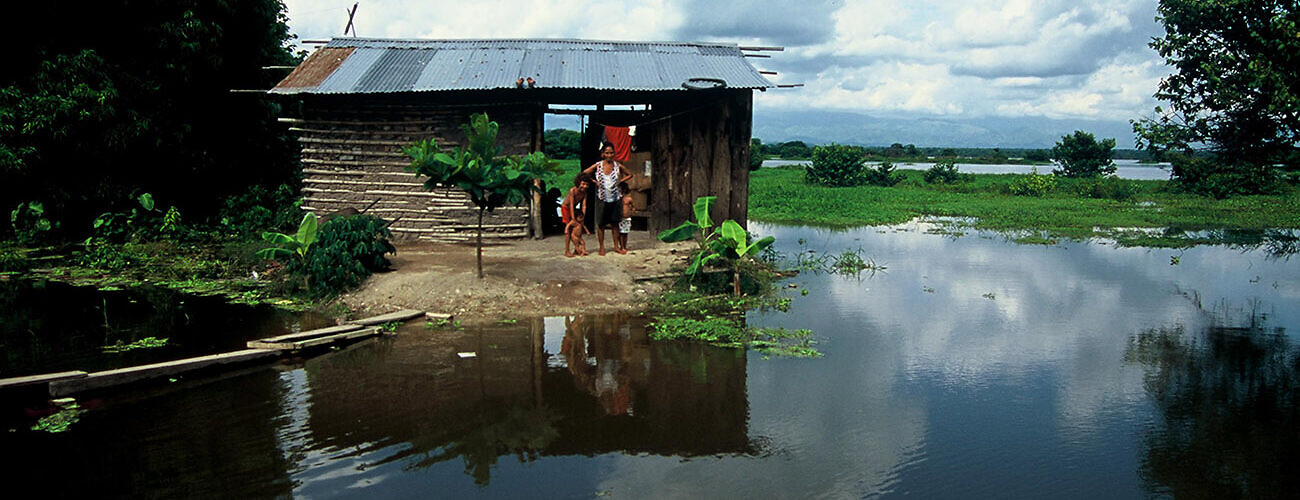Colombian family whose home floods every year, creating hazardous living conditions. July 12, 2007. (Scott Wallace/World Bank)
The establishment of a new Loss and Damage Fund and Funding Arrangements at COP27 and the Fund’s operationalization and initial capitalization at COP28 were milestones in the UN climate regime. The World Bank engaged in the Transitional Committee (TC) process as a potential host and trustee for the Fund, a member of a new “High-Level Dialogue,” and a direct provider of loss and damage (L&D) support. The implementation of the Fund and Funding Arrangements—the mosaic—is the first big test of the World Bank’s commitment to evolving its policies, practices, and relationships.
This paper discusses the World Bank’s engagement with loss and damage, including the context of broader reforms aiming to modernize the Bank, such as the Bank’s Evolution Roadmap, which identifies three guiding elements for the Bank’s evolution: a new mission and vision, a new playbook, and new resources. One of the key components of the Bank’s evolution is the introduction of climate-resilient debt clauses (CRDCs) or “pause clauses.” Pause clauses feature prominently in recent initiatives to reform the international financial architecture, such as Bridgetown 2.0, the Africa Climate Summit’s Nairobi Declaration, and the Vulnerable Twenty Group’s (V20) Accra-Marrakech Agenda.
The paper also discusses the debate over the World Bank’s hosting of the Fund and the set of conditions and safeguards, determined by developing countries, that the Bank would have to meet in order to host the Fund. Finally, the paper discusses priority actions for the High-Level Dialogue, including resource mobilization, institutional protocols, and the losses and damages of the future.








